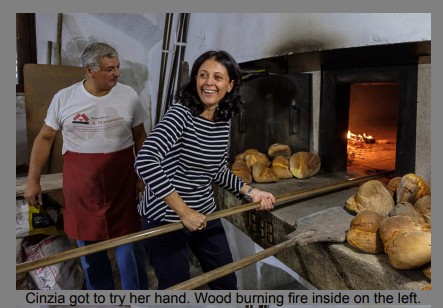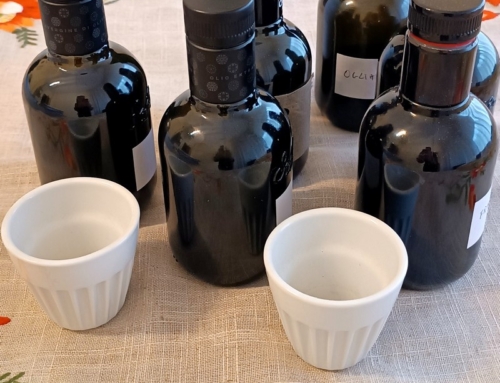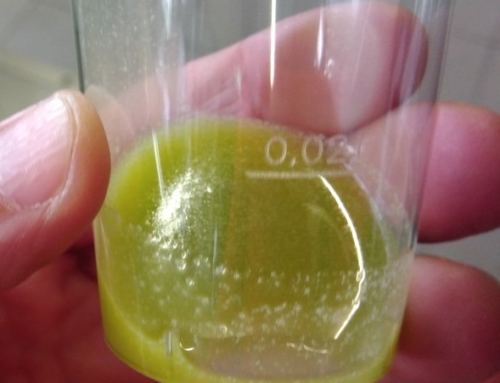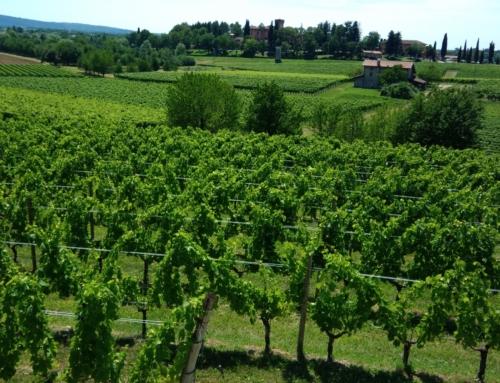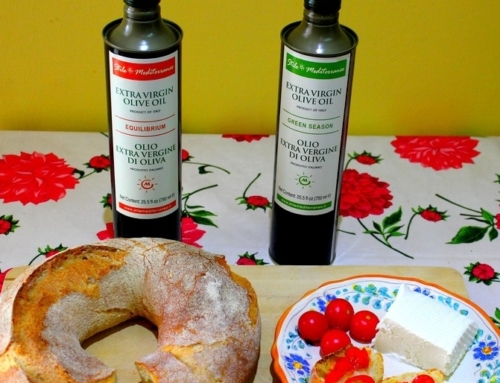After visiting many artisan mills and bakeries all over Italy and reading lots of medical research on the health benefits of complex grains, I can’t buy bread from the store anymore.
I just love making my own bread once a week, using very select flours that I source from my favorite mills, mainly from Altamura, a town in Puglia, aka the bread town.
Still today, in Altamura there are 35 ancient and really huge stone ovens where for centuries families have brought and baked their own dough (see above picture from James & Cheryl Strain’s beautiful book, where I am helping a local baker take the bread out of the oven with a very long shovel ).
Altamura is famous around the world for its bread that, in 2003, was awarded as the first DOP bread in Europe.
This bread is so good that Altamura is the only place in the world where McDonald’s had to close its branch, because local people never gave up eating the DOP Altamura bread.
The reason why Altamura bread is so famous (and so good!) is due to special durum wheat that is grown, in a sustainable way (and not focusing on quantity!) on these beautiful and sunny hills. From this complex grain, durum wheat semolina (semola di grano duro) is obtained.
Because it is a DOP protected product, bakeries must respect all the ancient procedures: bread must be made only with local semolina durum wheat, local water and sea salt; bread dough must be kneaded for 3 times; bread must be baked in wood burning ovens and must have the special “hat” shape.
Today, I tried to replicate the Altamura bread (and shape!) using the recipe of a baker friend from Altamura. This is the home version of the recipe he uses in his bakery.
Altamura Bread Recipe (home version):
-500 grams (1lb) durum wheat semolina (semola di grano duro)
-100 grams (3 1/2 oz) sourdough starter (it has to be 20% of the semolina);
OR 10 grams (0.4 oz) dried sourdough starter (if you don’t have the live sourdough starter)
-300-400 mL of water at 18°C (64F)
-10 grams (0.35 oz) fine sea salt
Put the semolina durum wheat in a bowl.
In a cup, mix the sourdough starter with a bit of water and pour it on top of the flour.
Stir with a spoon and add the water very slowly. The quantity of water will depend on the thickness of the semolina that you use and on the climate condition (humidity, ventilation, AC etc) of your kitchen.
Finally, add the sea salt and mix everything together until the semolina becomes a compact ball.
Move the dough to a wooden board, where you sprinkle some semolina durum wheat. Knead the dough with your hands until it gets elastic.
Put the dough back into the bowl, cover it with a clean kitchen towel and let it rise overnight, for at least 12-13 hours, in the lower part of the fridge.
Second rising of the dough:
The morning after, take the dough and let it acclimatize outside of the fridge for about 20-30 minutes.
Then, sprinkle a bit of durum wheat semolina on a wooden board and knead the dough for the second time for a few minutes.
Then gently press and stretch the dough with your hands and make a sort of circular (pizza) shape. Fold the dough on each side (so you make four folds), turn it upside down and model it to look like a ball again.
Then, put the dough back in the bowl and cover it with a kitchen towel so that it rises for the second time for 30 minutes.
Third rising of the dough:
After 30 minutes, put some more semolina on the wooden board and knead the dough again very gently. Press and stretch the dough again to make a circular (pizza) shape and fold it on each side (four folds).
Model the dough with your hands, very gently to look like a ball.
Put it back in the bowl and let it rest for the third time for other 30 minutes.
Baking:
Note: I use electric oven.
Prepare a baking pan with olive oil and flour.
Put the dough in the baking pan. Make a cross on top of the bread.
Preheat the oven for 15 minutes at 250°C (482° F).
Put another pan with some water at the bottom of the oven and bake the bread at 230°C (446°F) for the first 15 minutes.
Then remove the pan with water and bake the bread with the oven fan on at:
-200°C (392°F) for 20 minutes
-at 180°C (356°F) for 10 minutes
-at 170°C (338°F) for 5-10 minutes.
Leave the bread in the oven with the door open for 5 minutes.
Then, let the bread cool down on a grid.
Do not slice the bread when it is still warm or you will destroy the crumb.
For people interested in learning more about flours, complex grains, refined flours and their health benefits, I will be happy to organize an online ZOOM class.
Please contact me in case of interest.
Bread Flours that I use:
I have to say that I am as obsessed with flours as I am with extra virgin olive oils.
My main goal is to make a bread that is not only tasty but also very healthy and that I can eat every day, benefiting from all the important “natural” nutrients that the right grains can provide us.
Therefore, I only focus on using healthy flours: with moderate gluten, unrefined and with low glycemic index.
I like sourdough bread but I do not obsess with having a bread with big holes to the point that I would use a flour that is too rich in gluten or even refined.
Therefore, I would never make bread (or pasta) with Italian OO flour (that abroad may be called “all purpose” flour”) because this is a refined flour: all the good nutrients have been removed and only the gluten part is kept!
I make bread with semola di grano duro (that abroad is called durum wheat semolina) and also with other healthy grains like barely, einkorn etc.
If you prefer to use other bread flours, my recommendation to you is to always check if that flour is refined or unrefined. Do not only focus on the strength!
My sister in her ebook explains that one of the reasons why the ancient Mediterranean Diet can prevent so many health diseases is due to the fact that it is a balanced diet that also includes good carbs and good grains.
In Southern Italy and Sardinia, all grains used to make pasta and bread (from durum wheat, to barley, einkorn etc.) are not refined. They have lots of important nutrients that we would miss if we stopped eating those good grains (and the Southern Italian pasta or bread made with them).
Sardinia, for example, is famous for its Carasau bread that is another super delicious bread made with very high quality durum wheat semolina.
For thousands of years, Sardinian people have been following the ancient Mediterranean Diet. Today, Sardinia is one of the 5 blue zones with the highest concentration of centenarians (people living longer than 100 years).
Tomorrow, I will show you pictures of me making Carasau bread in Sardinia with the centenarians.
